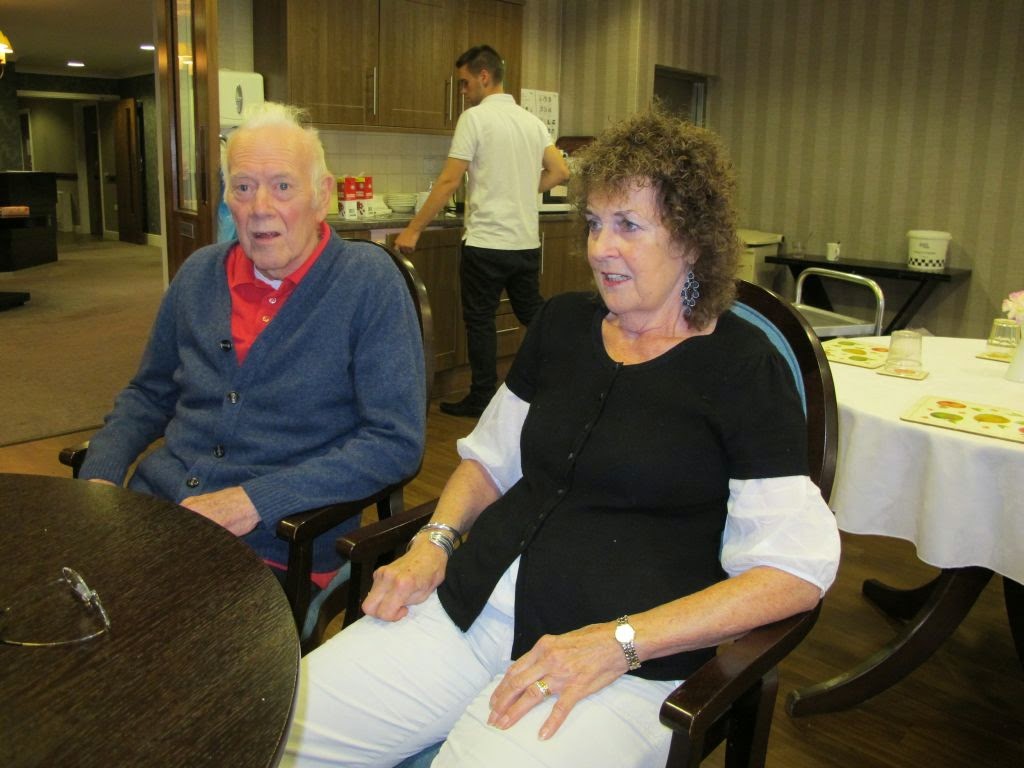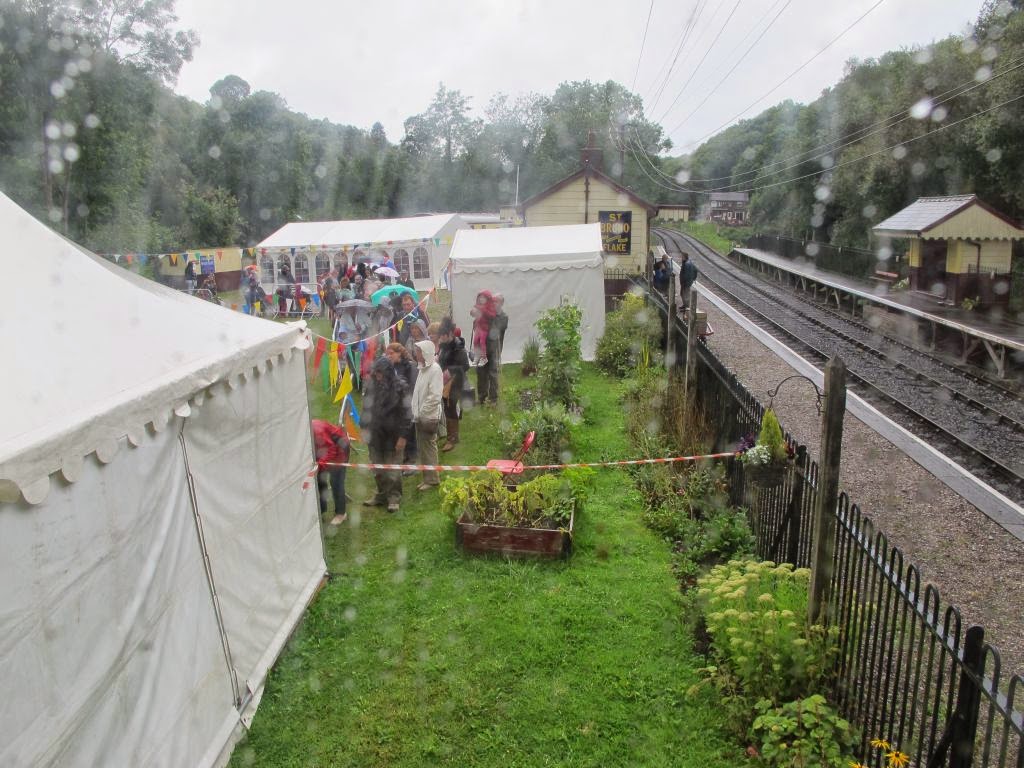This has been planned for a while, a trip on the Clyde paddle steamer 'Waverley' on one of her rare trips out of Liverpool (just two trips this year, of which yesterday's got cancelled as explained below). Most of the time she operates in home waters in Scotland.
An early start from Wilmslow got us to Crewe on an Arriva Wales Milford Haven service, where we picked up a Virgin Pendolino for Liverpool Lime Street.
Please click on any picture for a larger image.
The gang (Ivan, Pete, Malc) outside Lime St. Station in Liverpool at about 08:00 this morning. From here, having plenty of time, we walked to the Cruise Ship Terminal from where 'Waverley' was due to depart at 10:00.
Waverley makes her way up river before turning 180 degrees and returning down river to dock at the Cruise Ship Terminal. A handsome vessel, she looks like a ship should look, unlike most of today's passenger ships. We had quite a long wait before the crew allowed us to board, but we were at the front of the queue which helped in claiming good seats on the boat.
I was tempted to grab a seat out on deck, but was persuaded it might get a bit chilly there once at sea so instead we claimed a spot in the forward saloon; Peter, Ivan, Malc.
The engine room, with its 3-cylinder 2,100hp compound condensing steam engine. It's a simple layout, with the crank shaft across the ship onto each end of which are fitted the paddles which propel the ship through the water. The paddles have a mechanism which turns the blades end-on (feathers them, in propeller parlance) to cut down drag as they enter the water, whereupon they rotate to the normal position (blades parallel to the crank axle) for maximum thrust once in the water. Her two boilers are oil-fired.
Engine room gauges, with the bridge telegraph on the right
Up on deck, the weather was fine. There was a strong wind but it was a warm south easterly. Yesterday's cruise had been cancelled because the wind was too strong so we were lucky it relented a bit for our trip today.
Looking aft over the stern, with the twin wakes of the paddles clearly visible
Liverpool Bay is infested by thousands of these - wind turbines
The next three pictures will be clearer if you click on them for a larger image.
We were due to call at the newly-restored ferry pier at Llandudno for some passengers to disembark and some to be picked up. The captain decided the sea state was too rough to attempt mooring, and with winds forecast to get stronger in the afternoon there would be even less chance of stopping here on the way back to let passengers embark and disembark. So we swept past the pier in a great loop, and continued on our way. One of the problems this ship has is it's not easy to bring alongside in rough sea. There is no differential control of the paddles, so enough 'way' has to be kept on the ship to keep the rudder effective. No bow thrusters or anything else fancy like that, either!
Our wake shows the track of our 'low approach and go-around' at Llandudno pier
Disappointed crowds on Llandudno pier
Waverley seen from Llandudno pier as she passes before turning 180 degrees to approach from the direction of the Great Orme...
.....And having swept past the pier, turns to head west again round the Orme on her way to Anglesey
Pete and Ivan in serious discussion
The North Wales Coast in the Penmaenmawr and Llanfairfechen area
The Great Orme in the background as we pass abeam Puffin Island. We didn't see any puffins.
Disappointingly there was no commentary on board so we had to guess where we were passing. Best guess for here is Amlwch on Anglesey.
The sea was quite rough off Anglesey, and the boat was rolling noticeably with waves crashing onto the deck at times, and coming in through open port holes. Quite a few passengers got a soaking!
About halfway around the isle of Anglesey it was time to turn back. The boat turned right 180 degrees and set off direct for the Mersey, since there would not be a Llandudno stop on the return journey.
The original Waverley was lost at Dunkirk, and this vessel was built in 1946 to replace that one. It was bought by the Paddle Steamer Preservation Society, a charitable trust, in 1973 and they have lovingly restored it to 1946 condition. It is the only remaining sea-going paddle steamer operating in the world today .
Heading for home - the view over the stern
Our outward track had closely followed the coast, but the return was much further out to sea and as a result was considerably smoother. Waverley was able to demonstrate her speed in these ideal conditions, but estimated time of arrival back in Liverpool (announced as 19:00, one hour early due to the omission of the Llanduno stops) wasn't achieved because of headwinds. We actually got back to Liverpool at about 19:45.
What is it about steam? I met a few people from the Churnet Valley Railway on board, and this crew are from the Museum of Science & Industry Railway in Manchester; former Railway Officer (now working for Northern Rail) Matt second from left with his wife next to him hidden by the chap in the foreground (don't know who he is). Left and right on the picture are MoSI volunteers Dave and Dave.
A gas platform, one of many in the Morecambe Bay field, with a supply ship
The Liverpool skyline on the bow
This evening, moored back at the Cruise Ship Terminal in Liverpool
The gang, at Liverpool James Street station on the way home. We arrived at Lime Street just in time for a London Midland Birmingham departure which took us to Crewe, arriving there minutes before a Pendolino whisked us home to Wilmslow in time for a pint or two in the Bollin Fee, just to round of a most interesting and enjoyable day.
Here are a couple of videos I took:
It later transpired that we had been lucky to experience this cruise by steam along the North Wales coast, not knowing how weather-dependent is this vintage paddle steamer. Because of adverse weather, Waverley didn't leave her home on the Clyde until the afternoon before our cruise, sailing overnight to Liverpool. Following our cruise she should have set sail for Bristol, but instead spent two days off Rhos on Sea at anchor, awaiting suitable weather to make the journey south.


















































